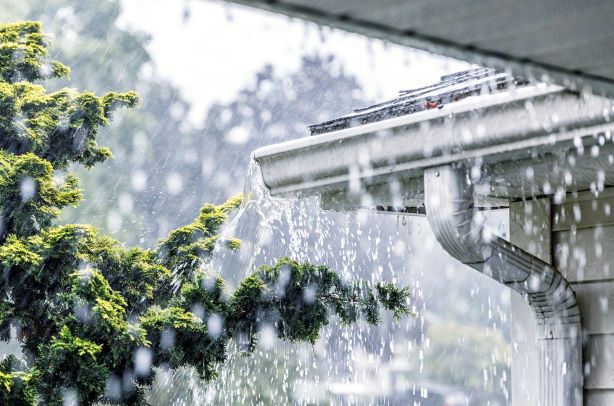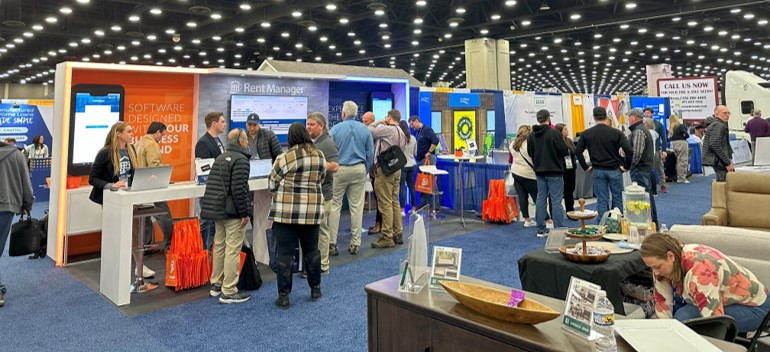Storms happen—especially during the summer and early fall months. Weather isn’t something that can be controlled and severe weather can happen in any area of the country. Extreme temperatures often make for more brutal storms or droughts. How do you prepare to face an increase in this type of weather despite its unpredictability? We are breaking down several of the most common types of severe weather in the United States and how you can help limit damage and the quantities of repairs to properties after the storm—especially in peak hurricane season.
Floods
Floods can happen anywhere there is rain and even where there isn’t. From Alaska to Florida and everywhere in between, floods are a possibility. Water surges can be triggered by rain runoff and natural disasters, but pipe bursts can be equally as damaging.
The aftermath of severe weather often involves submitting insurance claims, finding contractors, repairing damaged utilities, and possibly relocating tenants. It’s a lot of work. Flooding can cause damage far beyond the surface of your property, with many of the expensive repairs taking place in your units. Here are a few tips to help “flood-proof” your properties through particular renovations, as well as some precautions to take if flooding has already begun:
- Install foundation vents or a sump pump.
- Apply coatings and sealants to walls, windows, and doorways.
- Install check valves in the pipes of your property.
- Use sandbags to block gaps.
- Shut off your electricity at the breaker panel in case flood waters reach your electrical system.
- If flooding is caused by a utility failure, turn off the water supply line immediately.
- Photograph any flooding to document and defend your claim with your flood insurance provider.
Hurricanes and tropical storms
With hurricane season spanning May to November, it’s time to ensure your property is ready to weather storms. Although most hurricanes and tropical storms affect states lining the Gulf Coast and the Atlantic Ocean, many more states receive intense wind and rain from hurricanes, reaching far into the Midwest and upwards into Canada. This year has also seen tropical storms and hurricanes as far west as California, so it’s a good idea to have a plan in place no matter where your property is located.
Fortunately, hurricanes and tropical storms often come with a significant warning period before reaching land, so there’s time to get things in order before a potential evacuation. Boarding up windows, clearing outdoor spaces of potential flying debris, and having an evacuation plan in place for your properties are all essential. When you are armed with information, you can prepare your property to limit storm damage well in advance.
If you are in an area prone to severe storms, creating a plan for your properties before the emergency hits is imperative. To avoid confusion, specific staff members should be assigned specific tasks. The plan should outline timelines for site preparation, safety protocols, methods, and locations for securing equipment and materials, as well as a process for a safe return.
Tornadoes
Tornadoes are powerful and destructive natural disasters that can strike unexpectedly, causing extensive damage to properties and posing a significant threat to residents. While tornadoes are more common in certain regions of the United States, they can occur anywhere, making it crucial for property owners and managers to be prepared. Here are some essential steps to help you tornado-proof your property:
- Install a Tornado Shelter: Consider adding a tornado shelter or safe room to your property. These reinforced structures provide a secure place for tenants to seek refuge during a tornado. Make sure your tenants are aware of the shelter’s location and how to access it.
- Strengthen Building Structures: Ensure that the building’s roof, walls, and foundation are in good condition and can withstand strong winds. Reinforce entry doors and windows with impact-resistant materials.
- Create an Emergency Plan: Develop and share an emergency plan with your tenants that outlines what to do in case of a tornado warning. Designate specific areas within the building as safe zones and establish evacuation routes.
- Install a Tornado Warning System: Many areas that experience tornadoes already have a warning system in place, but it may help to have an onsite system to notify your tenants of an imminent tornado. Further, consider encouraging tenants to download local weather alert apps that can notify them of severe weather conditions.
- Secure Outdoor Items: In the event of a tornado watch or warning, remove or secure any outdoor items that could become projectiles, such as patio furniture, signage, or trash cans.
- Regular Inspections: Conduct regular inspections of the property to identify and address any potential hazards, such as loose debris, damaged trees, or weak structures.
- Emergency Kits: Encourage tenants to prepare emergency kits that include essential supplies like non-perishable food, water, flashlights, and first-aid supplies.
- Insurance Coverage: Ensure your property and renters are adequately insured, including coverage for tornado damage. Review your insurance policy to understand the extent of your coverage.
Blizzards
Blizzards can bring extreme cold, heavy snowfall, and icy conditions, posing unique challenges for property owners, especially in regions prone to winter storms. To protect your property and tenants during blizzards, follow these guidelines:
- Winterize Your Property: Before the winter season arrives, conduct a thorough winterization of your property. Insulate pipes to prevent freezing, seal any drafts, and test heating systems to ensure they are in good working order.
- Snow Removal Plan: Develop a snow removal plan that outlines responsibilities and procedures for clearing snow and ice from walkways, parking lots, and driveways promptly. Hire a reliable snow removal service if necessary.
- Emergency Heating: In case of power outages or heating system failures, consider backup heating options such as portable heaters or generators. Ensure tenants are aware of how to use them safely.
- Emergency Supplies: Stock common areas with emergency supplies like rock salt, shovels, and sand for tenants to use in case of icy conditions.
- Roof Inspection: Regularly inspect the roof for snow accumulation and ice dams, which can lead to leaks and structural damage. Safely remove excess snow if necessary.
- Vehicle Policies: Establish policies for tenant vehicle storage during winter storms, such as designated parking areas and snow removal responsibilities.
How do you prevent and control damage from severe weather?
One of the best ways to prevent damage is through communication with staff and residents. Severe weather conditions can sometimes threaten your tenants and their ability to remain in their units. When it comes to any possible hazards, giving accurate information in a timely manner makes all the difference. Having up-to-date contact information for your tenants is vital in case of a power outage or a flood warning. For example, if a resident depends on electricity to run medical equipment in their unit, it’s critical for you to know and record that information ahead of time.
If storm damage does occur at your property, having pictures and documentation of what your facilities looked like and how everything functioned prior to the storm is crucial for your insurance company and contractors. Keep a regularly updated photo album of every part of your property and properly document everything well in advance.
Experts also recommend taking the following steps when it comes to minimizing your properties’ vulnerability to extreme weather:
- Relocate or protect any equipment that shouldn’t be exposed to water.
- Provide floodwater entry and exit points.
- Use water and wind-resistant building materials below the design flood elevation (DFE).
- Seal all cracks and openings in exterior walls.
- Install backwater control plugs in floor drains and permanently seal floor drains that are no longer in use. Before anticipated flooding, sandbag the floor drains.
- Obtain waterproof covers for vents and louvers located under the DFE and install them before an anticipated flood.
- Permanently replace first-floor doors with sealed-gasket flood doors and install removable floodgates over entryways.
- If you have an elevator on the premises, keep electronic controls above the DFE in the rooftop machine room (for conventional-traction elevators), or in a mechanical closet adjacent to the elevator shaft on an upper floor (for MRL traction elevators).
- Properly anchor equipment located on the roof and attached to the building.
- Regularly inspect outdoor fixtures for signs of rust and corrosion.
Limiting the damage costs
You know that freak accidents happen, and while you can reduce damage, you can’t eliminate all possibilities of risk. Getting flood insurance is one of the best ways to help deal with damage from floods, hurricanes, and tropical storms. Overall, paying attention to weather forecasts, putting plans in place, and preparing may help reduce damage or costs. Being in regular communication with your tenants is another prudent step toward ensuring your community stays strong against any storm.
 Register for RMUC.25
Register for RMUC.25





